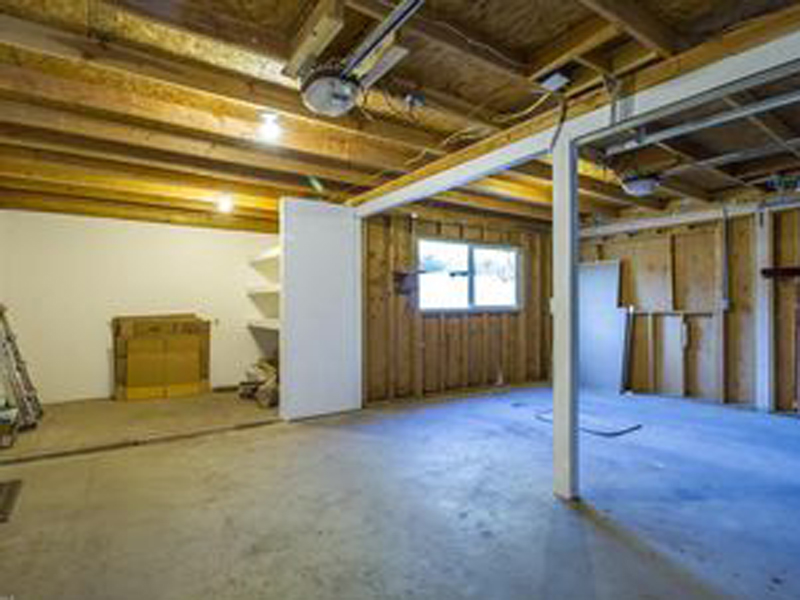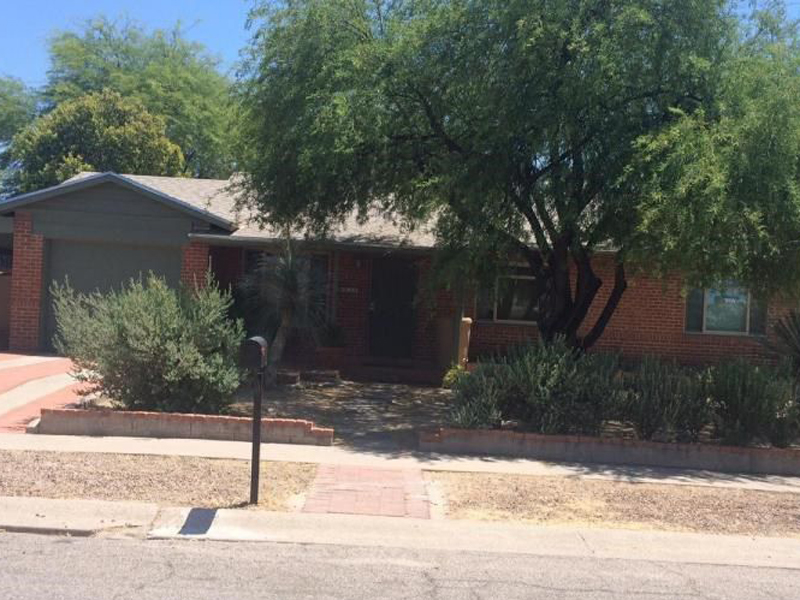Is Your Garage Door Stuck? Here's What to Do Very first
When your garage door will not open up, start with these essential safety and security checks before trying any repair services. First, make sure no person is standing near the door and that lorries are free from the opening. Search for apparent indications of damage like damaged panels, curved tracks, or hanging cords. If you see a snapped spring or severely damaged elements, stop right away and call a specialist—-- these repairs require specialized tools and knowledge to handle safely.

Check These 6 Things Before Calling a Professional
Before presuming you need expensive repairs, go through this fast diagnostic list that resolves most garage door issues:
-
Source of power: Validate the opener is connected in and the outlet is functioning
-
Remote batteries: Change dead batteries in your push-button control
-
Hands-on lock: Examine if somebody unintentionally involved the manual lock
-
Obstructions: Try to find particles obstructing the door's path or sensing units
-
Emergency situation launch: Make certain the red emergency cord hasn't been pulled
-
Breaker: Validate the garage circuit hasn't stumbled
These simple checks deal with roughly 70% of garage door concerns without requiring expert treatment.
10 Usual Factors Your Garage Door Will Not Open
Understanding why your garage door opener isn't working assists you pick the right service. Below are one of the most frequent reasons property owners experience:
Dead remote batteries represent the easiest fix—-- when batteries die, the remote can't send out signals to the opener. Power outages or stumbled breakers cut electrical power to the motor. Broken springs prevent the door from raising correctly and require instant professional interest. Sensing unit imbalance reasons safety systems to block door procedure. Track obstructions stop rollers from relocating smoothly. Electric motor overload triggers automatic shutoffs when the opener finds resistance. Limit switch issues puzzle the opener about door position. Wire damages interrupts the lifting mechanism. Weather-related concerns influence door movement during severe temperature levels. Component wear from age progressively decreases system performance.
Trouble # 1: Dead Remote Batteries
When your wall surface switch functions yet your remote does not, dead batteries are usually the perpetrator. Many garage door remotes use either 3-volt lithium or 12-volt alkaline batteries. Eliminate the back cover of your remote and examine the battery type. Change with fresh batteries and evaluate the remote. If it still does not work, you may require to reprogram it to your opener. Consult your opener's manual for specific reprogramming guidelines, as the procedure varies by producer.
Issue # 2: Power Supply Issues
Garage door power troubles often stem from loose connections or stumbled circuits. Inspect that the opener is strongly connected into its electrical outlet—-- resonance can loosen connections over time. Check the outlet with an additional tool to confirm it's working. Examine your home's breaker box for stumbled circuits, especially if you have actually experienced storms or power fluctuations. GFCI outlets may have tripped and require resetting. If the opener has power but will not react, the problem likely lies elsewhere in the system.
Trouble # 3: Broken or Damaged Springs
Broken garage door springtimes are among the most hazardous parts to handle. If you listen to a loud bang from your garage or discover the door really feels exceptionally hefty when attempting to lift manually, a springtime has most likely broken. Torsion springs run horizontally above the door, while extension springtimes sit on either side. Never try spring repair services on your own—-- these parts save remarkable stress that can create serious injury or fatality. Professional substitute commonly costs $150-$300 but guarantees your security.
Trouble # 4: Blocked Safety Sensors
Modern garage doors include security sensors that protect against closure when objects are identified. These sensing units can stop the door from opening up if they're dirty, misaligned, or blocked by particles. Tidy sensing unit lenses with a soft towel and make certain absolutely nothing blocks the undetectable light beam between them. Check that sensing units are appropriately aligned—-- the majority of have sign lights that reveal link condition. Sensing unit troubles usually settle with basic cleansing and adjustment.
Trouble # 5: Track Obstructions or Damage
Garage door tracks guide rollers as the door moves up and down. Dirt, particles, old oil, or tiny items can jam the system. Inspect tracks aesthetically and remove any kind of obstructions with a brush or cloth. Try to find dents, flexes, or warping that could hinder smooth operation. Minor track adjustments are possible for helpful property owners, yet considerable damages needs specialist repair service to avoid additional troubles or safety and security risks.
Issue # 6: Garage Door Opener Electric Motor Issues
When the garage door electric motor runs yet the door doesn't move, several problems could be responsible. The electric motor may be overloaded and shutting down as a safety measure. Gear wear, especially in older systems, can stop appropriate operation. Chain or belt drive problems affect power transmission. If you hear uncommon grinding, clicking, or humming noises, quit making use of the opener quickly. Motor repair services commonly set you back greater than replacement, especially for units over ten years old.
Step-by-Step DIY Troubleshooting Overview
Follow this systematic strategy to garage door fixing while prioritizing security throughout the process:
Action 1: Evaluate the wall surface button first. If it functions but the remote doesn't, concentrate on remote concerns. If neither works, examine power supply.
Step 2: Take a look at the hand-operated launch cord. If it's been drawn, the opener is disengaged from the door. Push the trolley back to reconnect.
Action 3: By hand test the door by disengaging the opener and trying to raise the door by hand. It ought to relocate smoothly and remain in location when half-open.
Step 4: Evaluate visible components for damages, paying special interest to springs, cables, and tracks.
Step 5: Check all safety and security attributes including sensors, limitation buttons, and auto-reverse features.
Action 6: Examination different controls (remote, wall surface switch, keypad) to isolate the trouble source.
Constantly put on safety glasses and job gloves when carrying out evaluations, and never effort repair work on springs or high-tension parts.
When to Call an Expert vs. do it yourself Solutions

Recognizing when to call a garage door professional versus trying DIY repairs shields both your safety and your wallet. Manage these issues yourself: dead remote batteries, power supply issues, minor track cleaning, sensor cleansing and alignment, and fundamental lubrication.
Never ever try these repair services on your own: spring substitute or change, cable repairs, significant track adjustment, electric wiring concerns, opener electric motor replacement, or any type of fixing involving high-tension elements. Professional professionals have specialized devices, training, and insurance to deal with dangerous fixings safely.
Consider repair prices versus replacement expenses, especially for doors over 15 years old. Modern garage doors use better safety and security attributes, power performance, and reliability than older designs.
Emergency Garage Door Solutions
When you're stuck to a garage door that will not open and garage door making grinding noise when opening require prompt access, comply with these emergency situation treatments:
Handbook Operation: Pull the red emergency launch cord to disengage the opener. This allows manual procedure yet needs appropriate technique to prevent injury. Raise the door slowly and equally, making use of leg muscles instead of your back. The majority of residential doors weigh 100-150 pounds, making them convenient for a lot of grownups.
Temporary Fixes: If the door opens manually but won't keep up, prop it open with sawhorses or clamps—-- never use your body or lorries as supports. For doors that will not shut totally, ensure the opening is secured if you must leave.
Emergency Service: Many garage door firms use 24/7 emergency service for scenarios involving safety and security problems, caught vehicles, or complete system failings. While a lot more costly than normal solution calls, emergency repair services offer prompt solutions when needed most.
Safety Caution: What NOT to Do
Garage door safety and security needs understanding hazardous repair work that need to never ever be attempted by property owners:
Never ever try to fix springtimes—-- they store enough energy to trigger fatal injuries when they break or are poorly handled. Don't require a stuck door—-- this can harm the opener, tracks, or door panels, creating extra pricey issues. Prevent bypassing safety and security features—-- sensors and auto-reverse devices prevent severe injuries and building damage.
Do not ignore odd noises—-- grinding, scuffing, or banging noises indicate issues that get worse in time. Never use the door if cords are torn or damaged—-- the door can fall all of a sudden. Do not attempt electrical repairs unless you're a certified electrical contractor—-- garage door openers use both 120V household existing and low-voltage control circuits.

Precautionary Maintenance to Avoid Future Problems
Normal garage door upkeep protects against most typical troubles and expands system life-span significantly:
Monthly Jobs: Aesthetic inspection of all elements, examining auto-reverse safety and security features, examining and tightening up equipment, and cleaning tracks and sensors.
Quarterly Jobs: Lubricating all moving get rid of appropriate garage door lube, testing manual operation, and checking weather condition securing.
Annual Tasks: Specialist assessment and tune-up, springtime change if needed, and opener upkeep consisting of belt or chain change.
Seasonal Tasks: Planning for weather condition extremes, checking insulation, and changing opener setups for temperature modifications.
Constant upkeep expenses far less than emergency repairs and makes certain trusted operation year-round.
Garage Door Will Not Open Up FAQs
Why will not my garage door open with the remote but collaborates with the wall surface switch?
This usually shows dead remote batteries, signal disturbance, or the demand to reprogram the remote. Inspect batteries initially, then consult your opener handbook for reprogramming instructions.
Can I manually open my garage door if the power is out?
Yes, draw the red emergency release cord to disengage the opener, then raise the door manually. Be planned for the door's full weight and lift with proper strategy to stay clear of injury.
Just how do I know if my garage door springtime is broken?
Indicators consist of a loud bang from the garage, the door feeling extremely hefty when raising by hand, visible voids in the springtime coils, or the door only opening a couple of inches prior to stopping.
Is it safe to utilize my garage door if it will not open right?
No, partial operation suggests mechanical issues that could intensify suddenly. Stop utilizing the door and have it checked by a specialist to stop more damages or injury.
What should I do if my garage door opens up but won't close?
Check safety and security sensing units for obstructions or imbalance, check out the tracks for debris, and evaluate the auto-reverse feature. If these do not resolve the problem, speak with a specialist.
How much does it cost to deal with a garage door that will not open?
Expenses vary commonly depending on the trouble: battery replacement ($5-$10), specialist medical diagnosis ($50-$100), springtime substitute ($150-$300), or opener substitute ($200-$500).
Can weather affect my garage door's capability to open?
Yes, extreme cold can thicken lubricants and impact metal parts, while heat can trigger growth issues. Most troubles fix as temperature levels normalize, however relentless problems might need expert attention.
Why does my garage door open up a few inches then quit?
This usually indicates damaged springs, restriction button issues, or track obstructions. The opener's security attributes quit operation when resistance is detected, avoiding damages to the electric motor or door.
Obtain Specialist Help for Complex Concerns
When do it yourself fixing does not resolve your garage door troubles, expert service technicians give the proficiency and devices needed for secure, long-term fixings. Certified professionals diagnose problems accurately, use manufacturer-approved parts, and give guarantees on their work.
Expert services consist of: detailed system examinations, springtime and cord replacement, opener repair and replacement, track alignment and replacement, electric troubleshooting, and emergency service calls.
What to expect: in advance pricing, accredited and insured service technicians, same-day solution for many repair work, and follow-up maintenance suggestions.
A lot of garage door companies supply complimentary quotes for significant repair services and can offer immediate solutions for urgent troubles influencing home safety and security or automobile access.
Getting Your Garage Door Working Again
A garage door that won't open up doesn't have to ruin your day or damage your spending plan. Start with basic troubleshooting actions like examining power, replacing batteries, and examining for noticeable blockages. Numerous issues have fast DIY services that bring back normal procedure within minutes.
Nonetheless, recognize when specialist help is essential—-- particularly for spring-related problems, electric troubles, or complex mechanical failings. Trying hazardous repair work on your own runs the risk of serious injury and commonly develops more pricey troubles.
Normal maintenance stops most garage door concerns and ensures reliable operation for several years to come. When issues do take place, resolve them without delay to stay clear of even more pricey repair services and keep your home's safety and benefit. Whether you need an easy battery replacement or full system overhaul, solutions exist to get your garage door working smoothly once again.